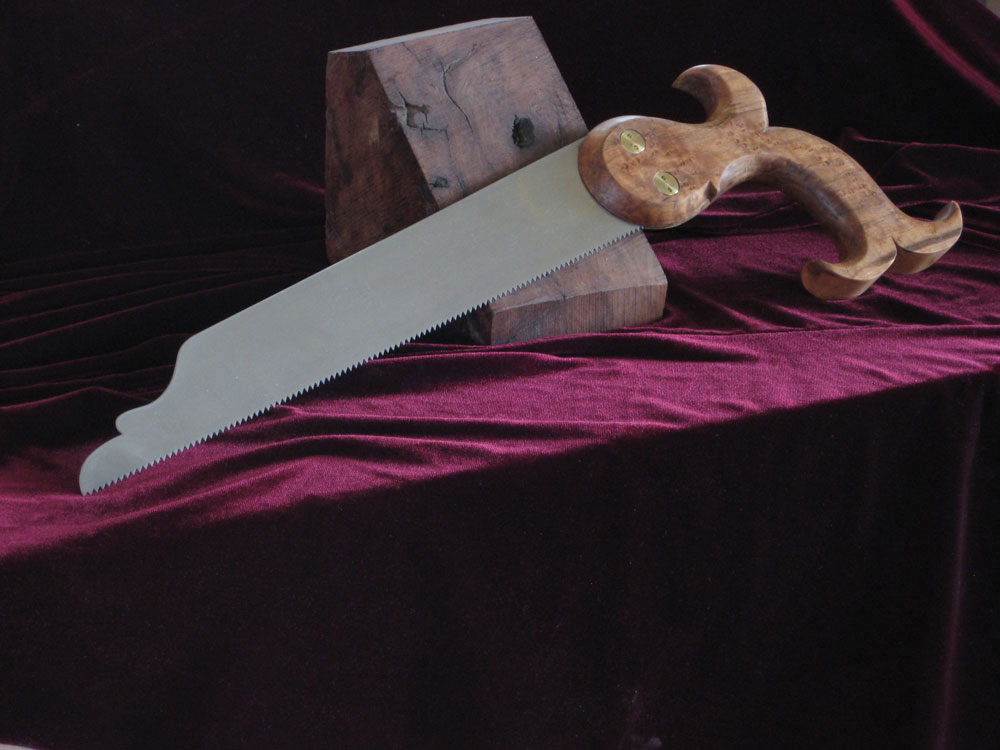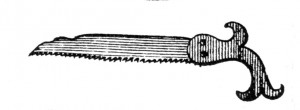We may receive a commission when you use our affiliate links. However, this does not impact our recommendations.
Anyone who has ever read Joseph Moxon’s “Mechanick Exercises” (1678) has puzzled over his pictures of saws. There are some frame saws, a whipsaw and a fancy handled saw without a back that Moxon, as far as I know, doesn’t discuss in his text.
That fancy saw has always caught my eye. What was it used for? What does it cut like? Is that a “nib” at its tip (actually, no, I really, really don’t wonder about that. I’m just messing with you). It looks a bit like a Turkish saw, a style of joinery saw that shows up in some old catalogs and is still used in some countries.
Well soon we will be able to get a taste of that Moxon saw and several other interesting patterns that are in the works from Kevin Reeves of NorthWind Toolworks in Fort Collins, Colo. Reeves is a 31-year-old sawmaker who is fascinated by ancient tools.
“A few years back, I started thinking about what kind of tools were used in ancient times,” Reeves wrote in an e-mail. “Studied it for awhile (still am), and came to the conclusion that the forefathers of woodworking did great things with crude tools. Copper saw blades, rough iron saws, you name it. Some of the joinery probably is lacking at times, but very old examples still exist.”
His Moxon saw is the first one he is offering for sale, and Reeves says he is still tinkering with the design. Right now the sawplate is .03” thick and the teeth are 10 points per inch and the saw is filed with no fleam (except the fleam that comes from hand-filing).
Reeves says that despite the lack of fleam, the saw cuts well on the rip and crosscut and he’s able to cut dovetails and dados with it.
“This saw is essentially a kind of reproduction, not something intended to revolutionize the world of woodworking,” he wrote. “But I think it has a place at the workbench…. I think it’s a nice sized saw, that fits between the dovetail or carcase saw and the panel saw.”
Reeves has other saws in the works including a compass saw, which was a common saw in the pre-Industrial age but can now be difficult to find – unless you buy one for cutting drywall. He also has a bench saw and another ancient saw posted on his site, which looks a bit Egyptian. Check out some photos here.
Also notable are the split nuts that Reeves uses on his saws. Unlike traditional split nuts, they can be grabbed from both sides so you can tighten them without stripping them. This might be the only durable split-nut design I’ve seen.
The world needs more sawmakers, especially ones willing to explore and experiment with different forms, so I wish NorthWind Toolworks the best of luck. I hope someday to give his saws a test drive and perhaps get a glimpse of what Moxon saw back in the 1600s.
— Christopher Schwarz
Hey, you reading this. You really should learn to sharpen your own saws. It’s not hard. You just need someone to show you the strokes. That person is Ron Herman, who has a great DVD called “Sharpening Handsaws” and a brand new follow-up DVD called “Handsaws: Tune-up, Set-up and More.” I haven’t seen this one, but Herman never fails to do good work.
Here are some supplies and tools we find essential in our everyday work around the shop. We may receive a commission from sales referred by our links; however, we have carefully selected these products for their usefulness and quality.












While the saws look very nice, I think the market for them will be very limited. They are simply too much money for what they are. The value is simply not there for what you are paying. It is relatively easy to build a beautiful tool to sell for a large sum. It is much more difficult to build it for a reasonable price. Lee Valley’s new saws are a good example of the latter. Even Lie-Nielsen’s saws are much more reasonably priced. I wish him well but I don’t he will sell many.
Saws look great, and I love the fact that he’s willing to explore some different/historical designs… but can he get away with using the slogan “heirloom quality woodworking tools” when Lie-Nielsen uses “heirloom quality tools”?
Now that is a niche. Cool concept.
Neat looking saw! Back to plain ramen for me.
The moxon saw is really nice, and seems to be priced in line with other high end makers….
The favorite on his site, for me at least, is the No.1 bench saw…. I like the tall plate with no back on it… sort of like a tenon saw that can be used for short length rips where the saw back would bottom out…. He looks like he is up there with Bad Axe in craftsmanship and quality of product too!
Very nice work Mr. sawmaker!
LOVE the look of the “Ancient” saw. That one may end up in my paws.
Dudes – you’ve been fleamed, just a few days early this year. The alias Mr. Reeves should have added a PayPal link to add to the excitement. Bet he would have sold-out his inventory.
300 quatloos for the new comer!
Hey, you reading this reply ;o) .. I AM working on learning to sharpen my own saws. My biggest challenge, because I only need to sharpen once in awhile, is setting things up so I don’t have to relearn how to do it each time. All tips and tricks are appreciated. Thanks for the links!
Cool saw, btw.